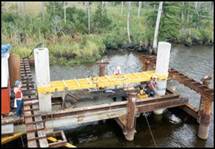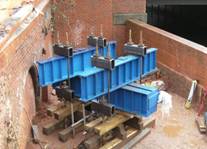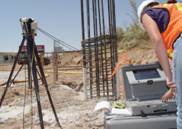Pile Integrity



Pile Integrity



Traditionally, static loading is the most common way of testing pile foundations. There are several accepted procedures to set-up and perform a static loading test, which are explained in detail in ASTM Standard D1143. In brief, static testing consists of gradually loading piles to failure, or to a required capacity level, while measuring the displacement of the pile head in order to assess the available resistance. We carry out static tests in any possible configuration: vertical (compression and tension), lateral and raked piles load tests. A wide range of our beams provides possibilities of test loading within a range of 100 kN up to 30 MN.
Kentledge Static Load Tests - Due to high costs of handling and operating of hoisting equipment, kentledge load tests are performed exclusively in cases where there is no possibility to use anchor piles, or anchor pile capacity is insufficient. Kentledge is also often used to carry out zone load tests, e.g. in case of gravel columns or improved soils.
Static Load Tests with Anchor Piles - To carry this type of test, extra-fine steel beams are required, hence their deformation under load is minimal. Threaded bars DYWIDAG Prestressing Steel THREADBAR are applied as connecting members to join beams to anchor piles.



Sonic Echo Integrity Testing - Low-strain testing (PIT), or sonic echo, is one of the most versatile means of quality assurance when it comes to cast-in-place concrete foundations. The method consists of generating a sonic wave at the surface of the foundation element using a special handheld hammer, and recording the reflected wave with time by means of a sensitive accelerometer mounted near the impact location. Potential defects can be detected by the presence of reflected sonic waves measured at a specific time after the initial impact. PIT has also been used successfully to determine the embedded length of existing foundations and sheet-piles.


Cross-Hole Sonic Logging - The test utilizes a phenomenon of ultrasonic wave propagation in the pile material - concrete. Performance of the test requires embedding from one to several steel tubes during concreting the pile so as to enable insertion of two probes: a transmitter and a receiver.
